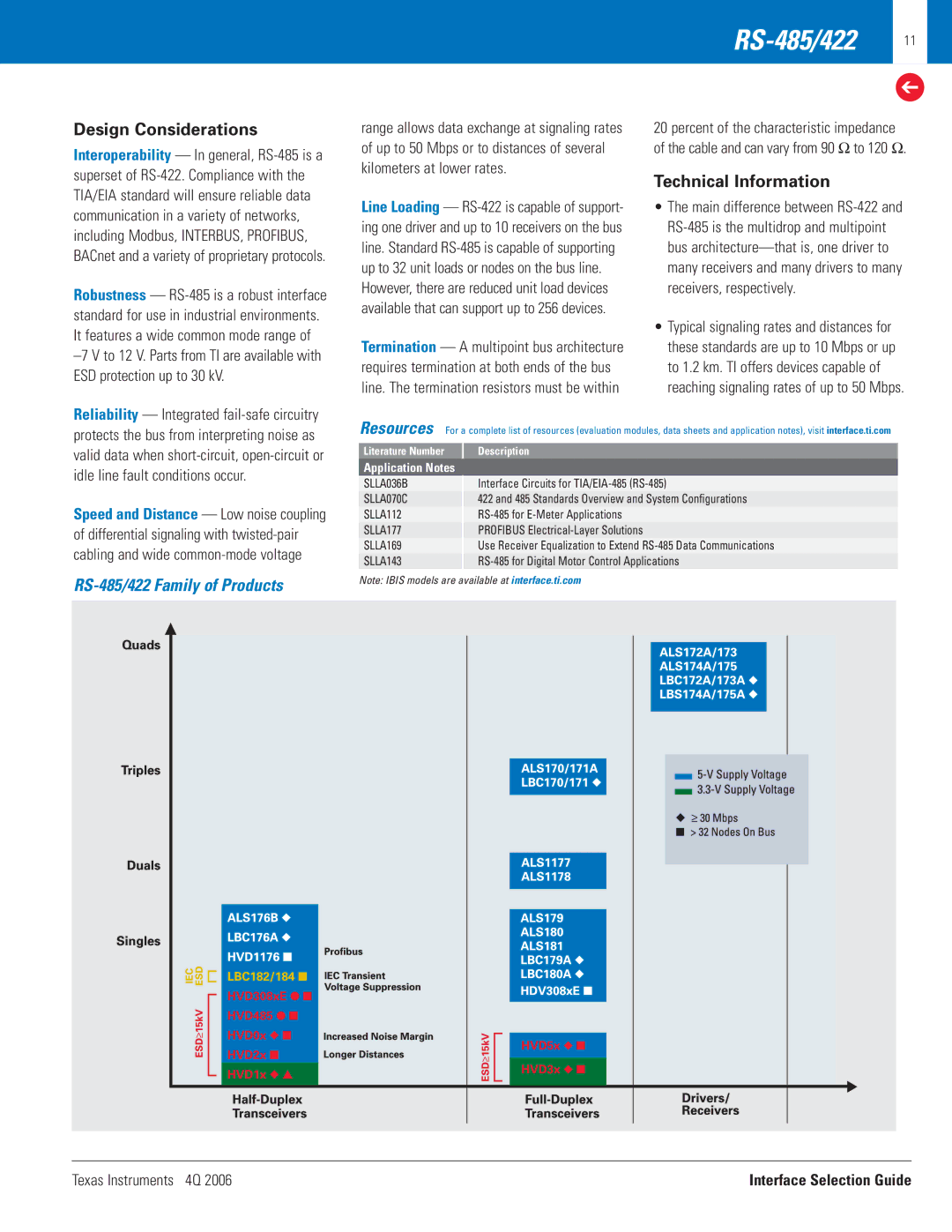
Design Considerations
Interoperability — In general,
Robustness —
range allows data exchange at signaling rates of up to 50 Mbps or to distances of several kilometers at lower rates.
Line Loading —
Termination — A multipoint bus architecture requires termination at both ends of the bus line. The termination resistors must be within
RS-485/422 11
➔
20 percent of the characteristic impedance of the cable and can vary from 90 Ω to 120 Ω.
Technical Information
•The main difference between
•Typical signaling rates and distances for these standards are up to 10 Mbps or up to 1.2 km. TI offers devices capable of reaching signaling rates of up to 50 Mbps.
Reliability — Integrated
Speed and Distance — Low noise coupling of differential signaling with
RS-485/422 Family of Products
Resources For a complete list of resources (evaluation modules, data sheets and application notes), visit interface.ti.com
Literature Number | Description |
Application Notes |
|
SLLA036B | Interface Circuits for |
SLLA070C | 422 and 485 Standards Overview and System Configurations |
SLLA112 | |
SLLA177 | PROFIBUS |
SLLA169 | Use Receiver Equalization to Extend |
SLLA143 |
Note: IBIS models are available at interface.ti.com
Texas Instruments 4Q 2006 | Interface Selection Guide |
